Prostatitis today is the leading disease in men and is mainly transmitted through sexual contact. Its complications threaten infertility, decreased libido, and impotence.
Initial symptoms of prostatitis in men
Prostatitis is an inflammatory disease. This is one of the most common urinary disorders, diagnosed in a representative of the powerful half of humans.
Mostly, this abnormality is found in men over the age of 30, although the disease has recently become younger. The treatment of prostatitis should be carried out by a qualified specialist (urologist or andrologist) because of the high possibility of various complications.
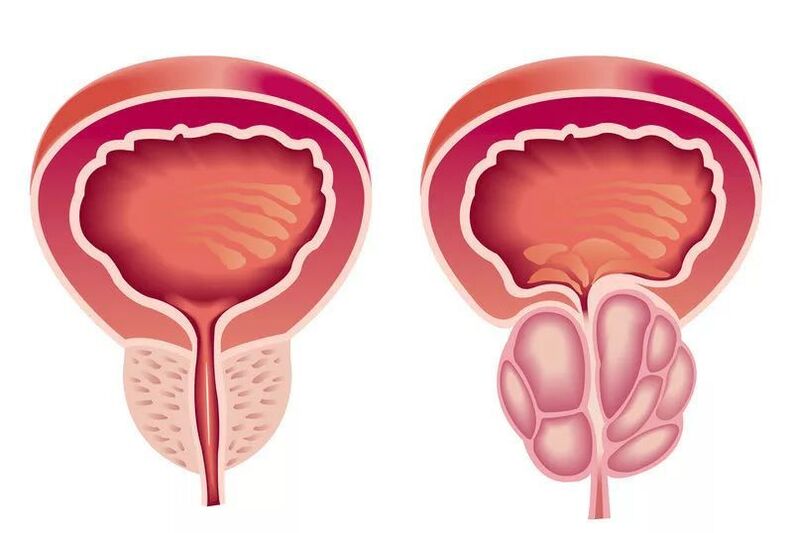
How is prostatitis treated?
with the help of drugs
- NSAIDs - relieve inflammation, fever and fever. They have mild analgesic properties. With the onset of prostatitis, short-term treatment with anti-inflammatory drugs and taking vitamins is needed to keep the glands in a normal state. Men's prescription: Diclofenac, Nise, Voltaren, Nimesulide. These drugs are produced in the form of suppositories, tablets, and injections.
- Antibiotics - designed to eliminate infectious or bacteriological factors of inflammation. Treatment protocols for prostatitis are signed after the pathogen has been identified and tested for resistance to antibiotics. The course of treatment is 7-10 days. In severe cases, treatment is extended to two weeks.
- Hormones are recommended if there is no benefit from the usual course of medication and if there is a decrease in libido due to advanced disease. Hormone therapy is contraindicated in the early stage. These drugs are taken under the strict supervision of a urologist.
- Symptomatic medicine - to eliminate pain syndrome, take aspirin tablets. No-shpa can eliminate cramps. For persistent severe pain, blockade with Novocain is required.
- Vitamins and drugs that keep prostate function working properly. During remission, it is recommended to drink drugs to normalize metabolism, improve blood supply and juice production to glandular tissues. For this purpose, botanical preparations are prescribed: Prostamol-Uno, Prostate-forte, etc. To strengthen the immune system, a complex of vitamins and minerals is shown: Duovit, Vitrum.
Self-medication is dangerous, and it does more harm than good. Before taking any of these medicines, you need to consult your urologist.
With the use of physical therapy
- UHF and microwave.
- Magnetic therapy.
- Mud therapy.
- Galvanized.
- Ultrasonic electrophoresis.
- Laser Treatment.
- Hyperthermia.
natural treatment
diagnosis
To start treatment for prostatitis on time, you need to contact a competent specialist for a thorough examination and a correct diagnosis. The list of recommended diagnostic methods includes the following:
- Blood tests - to study the biochemical components, to know the level of PSA (Prostate Specific Antigen), general analysis and PCR if necessary.
- Urinalysis - The man is asked to urinate in several different containers to be studied in different ways.
- Scrape from the surface of the urethra to detect infectious agents.
- Bacteriological culture of prostate secretions and urethral secretions to determine bacterial pathogens and their resistance to drugs.
- Prostate Ultrasound - Allows you to assess the size and shape of the gland, the presence of tissue fusion, adhesions and scarring changes.
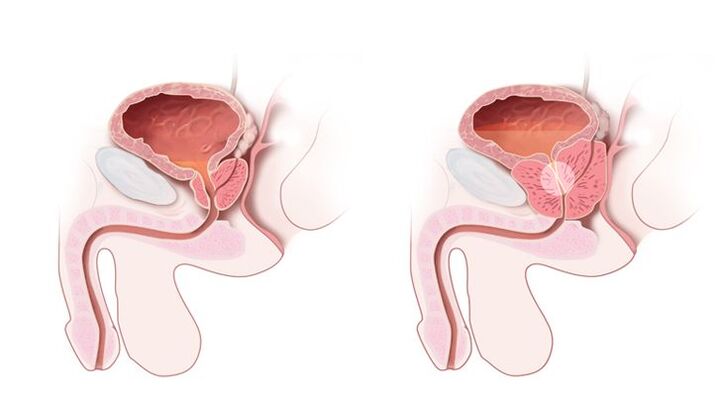
A mandatory item in the diagnosis of prostatitis is a digital rectal examination. A finger examination allows a doctor to feel the gland and assess its density, structure, shape, and size. Also, during a rectal exam, the secrets of the prostate are obtained and sent for analysis. If indicated, other examination methods will be individually assigned to specific patients.
These can be measurements of urine flow velocity, magnetic resonance or computed tomography scans, X-rays of pelvic organs, and other methods.
acute prostatitis
The disease starts with a sharp rise in temperature (up to 40 degrees), severe headache, and fever. Symptoms appear with groin, perineal, back pain, urethral discharge, frequent urination, and a constant urge to urinate.
Delayed bladder emptying and burning sensation. The urine itself becomes cloudy, and a mixture of blood may appear in it. Irritability and fatigue.
The result of acute prostatitis can be complete resolution of the entire process (prompt treatment). Since many organs of the small pelvis undergo changes, it cannot be left unchecked, or corresponding complications will occur:
- Seminal vesiculitis is inflammation of the seminal vesicles, the cause of pus in the semen, which not only reduces the quality of ejaculate, but also leads to the loss of reproductive function.
- Colitis - inflammatory changes in semen nodules become the cause of severe pain during sexual intercourse, interruption of orgasm, psychogenic impotence.
- An abscess forms in the body of the prostate, it ruptures, purulent damage to the rectum leads to worsening of symptoms, strong poisoning of the body, until death.
- Stasis of prostate tissue can cause changes in its structure, disrupt innervation, blood supply, and either the gland itself or nearby organs, disrupting its function. Erections became insufficient for mature intercourse, premature ejaculation, prolonged intercourse without orgasm were observed.
- Scarring of the glands, spermatic cord leading to infertility, decreased sperm quality components, and decreased sperm motility. Narrowing of the urethra can interfere with the normal process of urination, and bladder obstruction can cause acute urinary retention that requires urgent surgical treatment.
The main symptoms
As mentioned above, the disease can be chronic and acute. A common and one of the most important symptoms is increased urination. A healthy person will typically experience no more than 10-11 urges to urinate during the day (normal numbers are 5-6).
Due to the development of inflammation of the prostate, which negatively affects the bladder, therefore, in the presence of the disease, the following symptoms appear:
- Increased number of urges (while daily urine output remained the same).
- Urine is excreted in small portions, which is associated with receiving false signals from bladder receptors due to the presence of inflammatory processes. Therefore, a full bladder may feel even after emptying.
- Pain during urination, which is due to the narrowing of the urethra due to the inflammatory process of the prostate.
- Difficulty urinating due to inflammation pressing on certain areas of the urethra. In some cases, men cannot empty their bladders at all.
- At night, the bladder wall begins to send false signals, which increases the number of toilet trips during sleep.

Part of the diagnosis of prostatitis can also be made by monitoring body temperature and problems related to urination. If these problems are accompanied by an increase in temperature to sub-febrile and calorific values, then we will most likely be talking about the development of pathology. It should be noted that in the later stages of the development of the disease, on the contrary, a drop in body temperature to 35. 5-36 degrees can be observed, which is in any case an extremely unfavorable and dangerous symptom and should not be allowed).
In the intermediate stages of the disease, blood may be observed in the patient's urine. This sign is relatively rare, usually not indicative, but very dangerous. It may begin to manifest due to purulent fusion of the prostate, trauma to the prostate, and complications of the inflammatory process with hyperplasia. Treatment in this case is complex (usually requiring surgical intervention).
Treatment should begin as soon as the first symptoms of the disease appear. If there are at least some urination problems, although seemingly insignificant, in some cases accompanied by simple areas of fever and pain, then you should make an appointment with a urologist right away to clarify the diagnosis. The above pathological signs must be paid attention to, because prostatitis can be overcome quickly and painlessly only with timely treatment.
Why does the prostate become inflamed?
In fact, there are only two main reasons:
- Infect. In most cases, prostatitis develops as a result of a prostate infection. Infections can occur through the bladder, urethra, rectum, blood and lymph. It turns out that prostatitis itself is often a complication of an existing disease. Therefore, do not self-medicate, you must first cure the source of infection. Cystitis, pyelonephritis, urethritis, STIs (sexually transmitted infections) - understandably, they are directly related to the prostate. Even untreated tonsillitis, sinusitis, flu, tooth decay can again plague prostate inflammation.
- Circulatory disorder. This may be due to structural features, urethral spasm, nerve conduction disturbances and the work of the abdominal and pelvic muscles, or due to external factors.
However, whether prostatitis develops depends first on the predisposing factors:
- messy sex life. Large numbers of sexual partners, especially unprotected contact - this depletes the immune system, which must constantly confront the foreign microflora in female secretions. Sooner or later it will fail.
- long-term abstinence. This is the other extreme. Sexual insufficiency adversely affects the general condition of men, especially the prostate. Its secrets stand still, blood circulation is disturbed, and infections develop.
- Masturbate. It just so happens that men try to escape the lack of sex by masturbating. However, this can cause the prostate to lose its tone and become lethargic. It has even been isolated into another type of prostatitis - hyperemia.
- excess weight. In overweight men, the load on the pelvic organs, as well as the entire body, is greatly increased. The blood supply is disturbed, so prostatitis and hemorrhoids and many other diseases occur.
- low temperature. "Don't sit in the cold, " they said to all the girls. However, this also applies to men. At risk are lovers of extreme winter entertainment, avid fishermen, owners of old cars (oh, I often see men lying on cardboard under their cars in winter), and even passengers on icy trains, andFashionista with rolled up pants. hat. Oh yes, urinating outside in the winter can also have serious consequences.
- Inactive. Basically, this applies to workflow, when you have to sit in one place for a long time: drivers, office workers. Crossing your legs is especially harmful because the load on the prostate will only increase.
- pressure. Psychological problems, chronic sleep deprivation, and overloaded work schedules are favorites for infection.
- Suppresses the urge to urinate. Is the 5 minutes saved in a busy workflow worth the potential problem?
- bad habits. So, where are they without them? Abuse of alcohol and nicotine will only violate.
- Wrong nutrition. Fatty, spicy, salty foods are magnets for pelvic organ disease.
- Background disease. Prostatitis can be complicated by any untreated infectious disease.
- tights. And "fashionable" pants that are too tight. They squeeze the small pelvis, disrupt blood circulation, and cause swelling and inflammation.
- Body overload. Professional athletes, loaders, active visitors to the gym are all at great risk.
- self-medication. Sometimes men are even ashamed to admit their problems to doctors, and they try to suppress the disease with various folk remedies that have proven not so good. However, it happens that one cannot cope here without the medicine prescribed by a competent doctor.
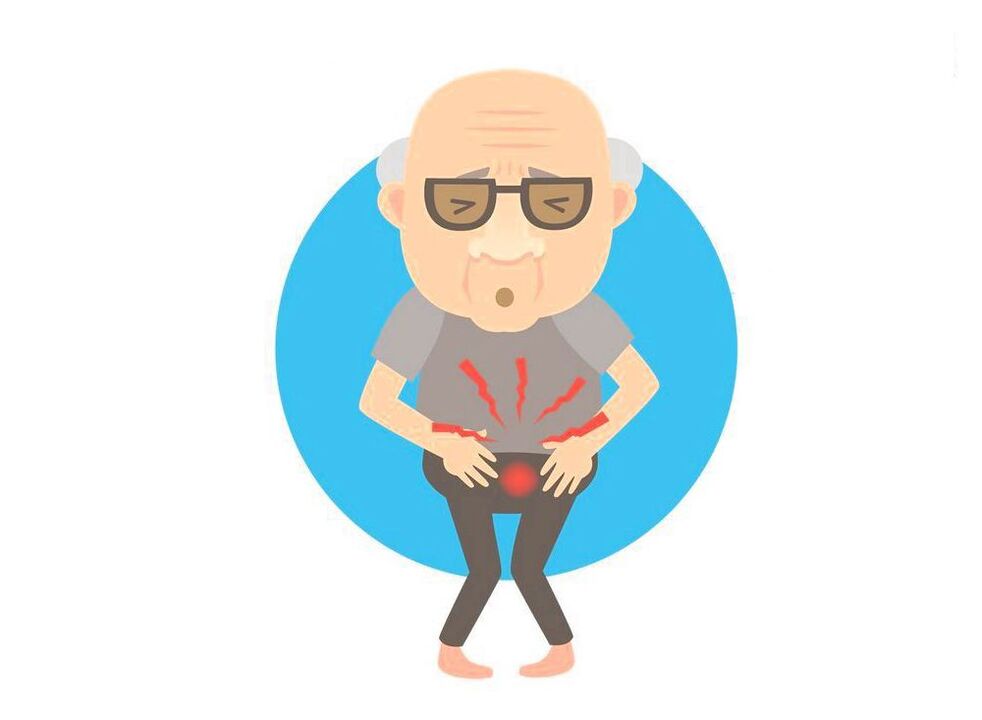
How is the disease diagnosed?
Diagnosis by urologist or andrologistAfter examining the patient, collecting the medical history, and studying the symptoms. Doctors need to know the patient's method of contraception, whether sexual partners have sexually transmitted infections, and the possibility of having anal sex without a condom. This data helps diagnose and guide doctors in the right direction. Prescribing perineal disease or episodes of discomfort allows us to judge the course of prostatitis and its severity. A urologist must examine the patient's genitals and perform a rectal examination of the prostate. To do this, he inserts a finger into the patient's anus and gropes on the front wall of the prostate, which protrudes from the rectum. Soreness and its size indicate the intensity of the inflammatory process.
Next, doctors perform a series of instrumental, microscopic, bacteriological, and immunological studies to determine the cause. The most common diagnosis is a 4- or 3-cup urine sample. The first method is time-consuming and difficult to implement in practice because it requires the patient to intentionally interrupt urination multiple times. The second modification is simpler: the patient continuously urinates into three different containers. The first part is about the state of the urinary tract, the second part is about the pathology of the bladder and kidneys, and the third part is information about the state of the prostate. Examine all collected material under a microscope. With prostatitis, white blood cells and sometimes bacteria are found in the third part of the urine.
For microscopy, the secrets of the prostate are also employed.To do this, the doctor massages the prostate through the wall of the rectum for a period of time, allowing it to drain into the urethra. Smears are made from laboratory-collected material, stained and studied under high magnification. The hallmark of inflammation is the white blood cells, and the bacterial cause of the disease is the bacteria in the smear. To determine the type of pathogen, prostates were secretly seeded on nutrient medium. If pathogenic microorganisms are present, after 3-5 days they will form microbial colonies, which can then be studied. Bacteriological methods can obtain data on the susceptibility of microbial communities to antibiotics.
To perform instrument diagnostics:
- kidney ultrasound;
- TRUS of the prostate with Doppler angiography - an ultrasound probe is inserted into the rectum for optimal visualization of the prostate and additionally to assess its blood flow;
- Persistent recurrent prostatitis requires ascending urethrography. A radiopaque substance is injected into the urethra, and a series of sequential images are taken.
In addition to these methods, all types of STI research are very important. Including:
- PCR ejaculation, prostate secretion, urethral scraping - this method allows you to detect many pathogens;
- Blood ELISA - Detects specific antibodies against STI pathogens.
Types of Prostatitis
According to the National Institutes of Health (NIH USA) criteria from 1995, prostatitis is classified into four categories:
- The first category: acute prostatitis;
- The second category: chronic bacterial prostatitis;
- The third category: chronic prostatitis/chronic pelvic pain syndrome (CP/CPPS);
- Class IIIa: chronic prostatitis/chronic pelvic pain syndrome with signs of inflammation;
- Class IIIb: chronic prostatitis/chronic pelvic pain syndrome without signs of inflammation;
- Category 4: Asymptomatic (asymptomatic) chronic prostatitis.
Occasionally, chronic granulomatous prostatitis not mentioned in this category also occurs.
In turn, most experts will distinguish:
According to the course of the disease:
- acute prostatitis;
- chronic prostatitis;
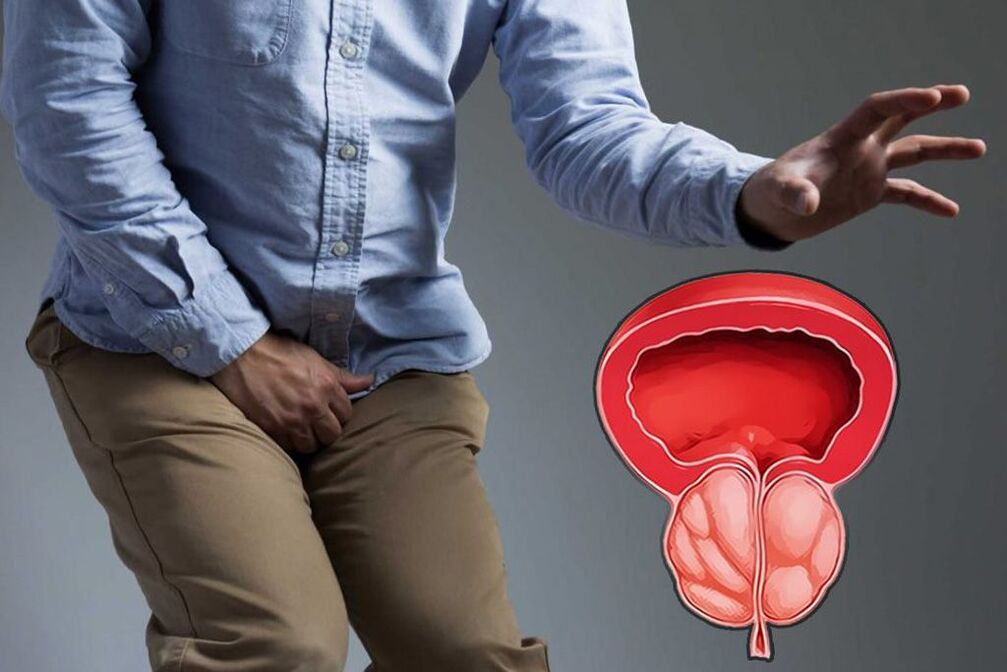
Depending on the cause of the disease:
- bacterial prostatitis;
- nonbacterial prostatitis
Bacterial prostatitis occurs in most cases, especially in men under 40.
Based on this, there are:
- acute bacterial prostatitis;
- chronic bacterial prostatitis;
- Chronic nonbacterial prostatitis.
prevention
To prevent inflammation or recurrence of chronic disease, you must follow these recommendations:
- reduce alcohol consumption;
- exercise regularly;
- avoid hypothermia;
- stop smoking;
- avoid stressful situations;
- Prompt treatment of inflammation - first of all, this applies to genital infections;
- take a contrast shower;
- Avoid lifting heavy objects;
- use of barrier methods of contraception;
- have regular sex;
- taking vitamin preparations;
- engage in boosting immunity;
- see a urologist twice a year;
- Eat right and balanced.
The role of the prostate in men: what is it responsible for?
The prostate is an exocrine gland in the male body.
Iron belongs to the reproductive system and is responsible for the production of several specific substances:
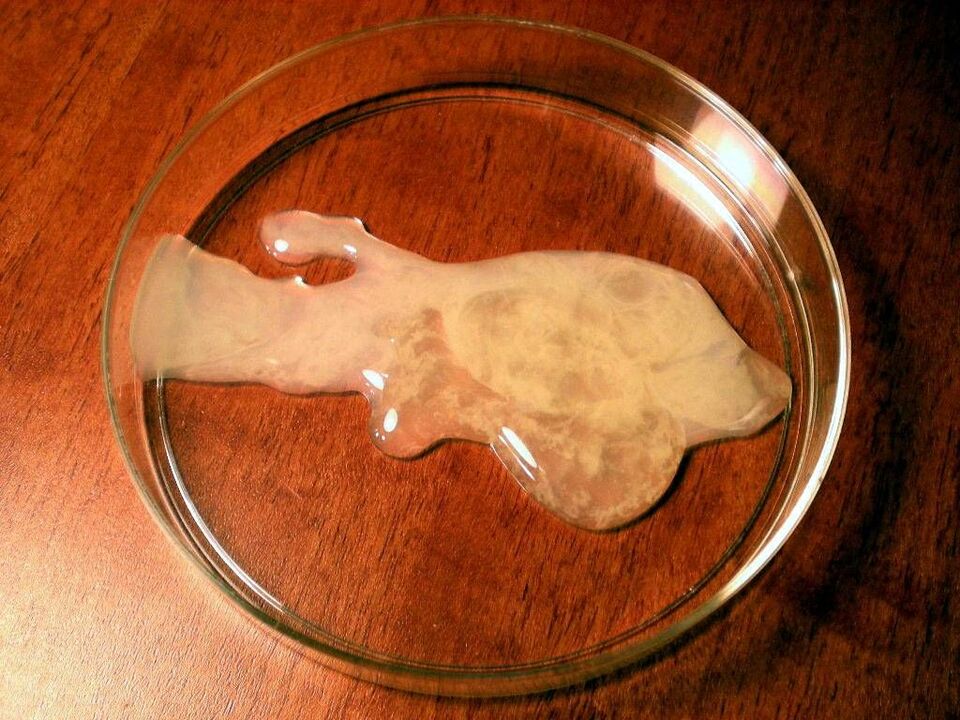
- The main one is the secret (prostatic fluid), which provides the necessary viscosity for ejaculation and, therefore, normal sperm motility. The sperm is too thick, fertilization is difficult, and a woman simply cannot conceive from a seemingly healthy man;
- Other components maintain the normal composition of sperm. These include biologically active substances, immunoglobulins, enzymes, vitamins, trace elements, etc. The norms of these substances vary from person to person, and it is the prostate that regulates their levels.
As such, she is responsible for a man's reproductive capacity, having the opportunity to have a normal and complete sex life and to have children. This is the main function of the glands, but there are other functions that are just as important.

























